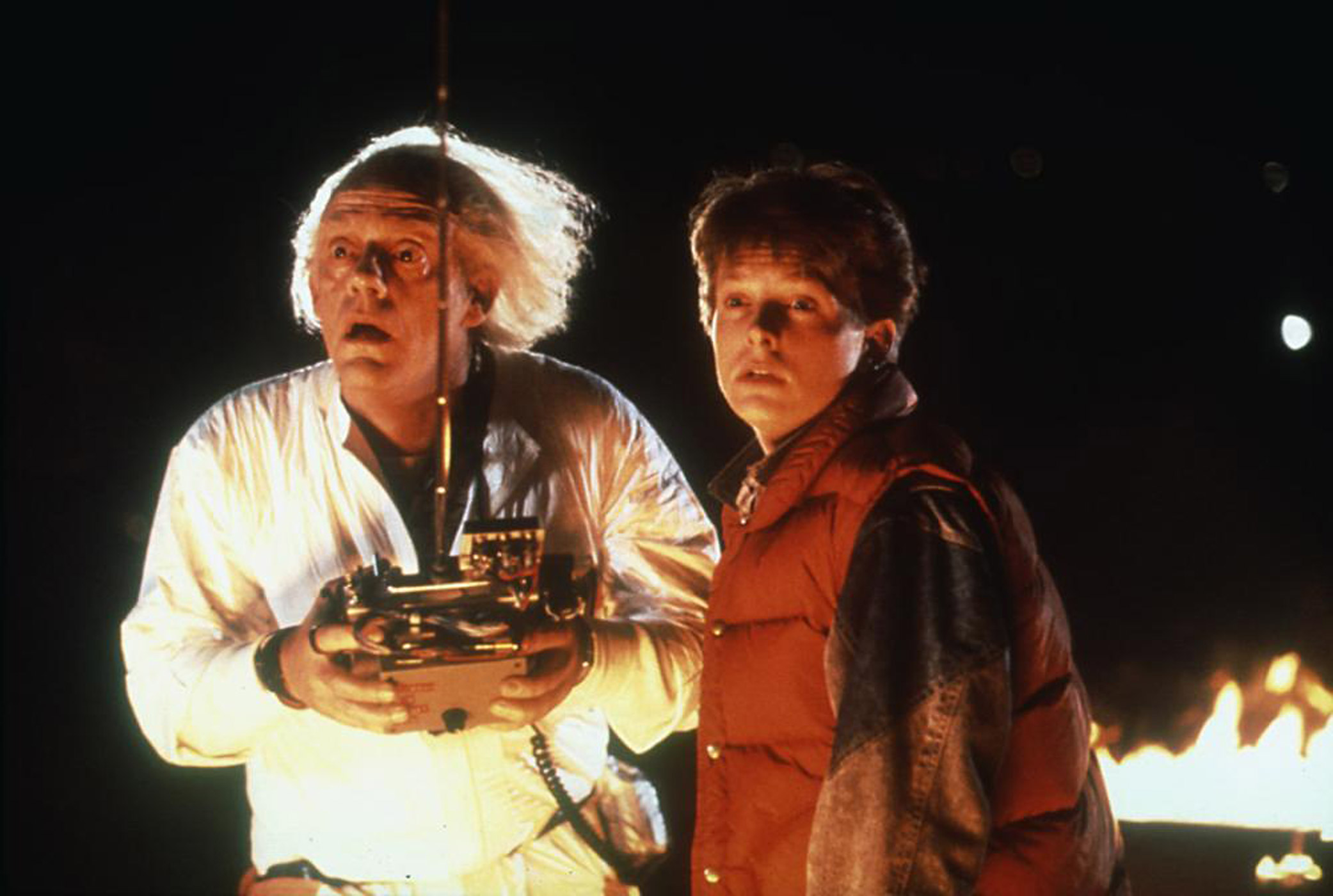Marty McFly versus digital marketing analytics

In what the brilliant Victoria Coren Mitchell describes as the greatest film of all time, Back to the Future, Marty McFly finds a piece of technology – the iconic DeLorean car – that can travel through time, to the past, and the future. But it depends on your perspective as to whether what you see is the past, the present or the future. The DeLorean starts in his present (1985), and he then ends up going to the past in it (1955), only to return to the future (1985, so his original present). At the end, he takes off to go into his future (2015, which is of course now in our past!).
Marty McFly would not be out of place in the digital marketing analytics world right now, because we are at a crossroads which points in all directions – the past, present and future. Of course, it is a question of perspective as to what you regard as past or future. And this time, the technology, whilst as transformational, is not as strikingly beautiful as a DeLorean; it is a Customer Data Platform.
This year is a particularly important one for the Digital Marketing industry. The end of cookies at the beginning of 2022 means the digital marketing industry is looking into the future with more trepidation than for many years, after years of near certainty of continued progress. This year, there is concern that the death of cookies, on which many tools have been dependent for around 15 years, will move the industry back decades in terms of its ability and sophistication to deliver customer experiences. But there is also the possibility that new technology can fast forward the industry beyond its current concerns. It is, in other words, Marty McFly’s 1985, and we can either go back, or forward.
Of course, everyone’s first choice is to effortlessly drive off into the future. And many of the recent announcements are very confident about the future and how straight-forward it can be.
But it is not as simple as that. Because how do you fuel such technology? What are the exact conditions needed to make it work? In the film, of course, it took a lightning bolt, and for many, making digital marketing work at the moment requires a similar level of energy, and luck.
The problems with the flux capacitor!

To be clear, the digital marketing industry is worried about data deprecation. Much more than it is letting on. Whilst there are many confident announcements that it does not really affect them, when you go to some of the detailed technical sessions, the death of the cookie clearly does affect how all digital marketing tools can work, and the real experts know it.
It affects them because they are no longer in control of the efficacy of their individual solutions. Apple is. With initiatives like ITP, the accuracy of digital marketing data is actually controlled by how many opt in to tracking on the latest devices. And whilst they may be able to identify a solution for that individual release, the problem is that the next release could happen at any time. And then the effectiveness of the system changes again. You do not want to get stuck in 1955!
The bigger issue is the digital marketing landscape has just one solution at the moment – the Customer Data Platform. This is the “Flux Capacitor” of the industry; the black box, built on science, although a fairly mystical and unexplained one, that delivers magical results that only it can achieve. This allows you to identify all the different identifiers you may have for a customer (they are all fragmented now, thanks to data deprecation), unify them on a single platform, and then integrate your marketing delivery applications (web site, email, personalisation engine, optimisation tools, etc) with these, so you can deliver the right experience for the end customer. This is exactly the right strategy, and exactly what all organisations everywhere should be looking to do.
So that is good. The problem is, we have been here before. Back in the old days (say, 1955) this used to be called the Single View of the Customer. And then the Unified Customer Profile (or Process, depending on your preference). So, what have we learned? We know it takes time. And commitment. And effort. And skills. And people. And, lots of other things other than technology. It is not, in other words, actually a magic box; it really does need vast amount of energy to power it.
Your Kids Are Going To Love This
But contrary to the industry narrative that the only way is the future, actually, looking back at the old ways (and here I genuinely mean 1955) allows us to see how organisations managed customer insight and data before digital platforms even existed. If we embrace these old ways first, if we go back in time to see what came before, we will be better placed to go forward into the future.
If you go back to pre-digital, to the era of the “mad men”, it was the focus group and customer survey that was the key customer insight tool. Consent and delivery of information was sought upfront, and these customers – few in number, but extremely engaged – were central to how marketing campaigns, ad executions and new products were understood, evaluated and evolved. And marketing research teams absolutely understood the whole customer, because they actually spoke with them, often face-to-face. This approach pioneered and drove customer insight until the advent of the commercial internet in the 1990s; I am old enough to have worked on such methods and delivered insight deemed award-winning through it!
In our present world, the focus on the cookie has taken us away from the real picture of the actual customer. The use of proxies has obscured the customer behind optimising single channels, on the (generally false) assumption that customer journeys only take place in one place. But because it has been easier to do, and because it has generally worked, we have really focused on the understanding, delivery and optimisation of ‘cookied’ experiences, not actual customer experiences.
If we travel back in time, we will learn that understanding real customers, and bringing together a range of data, including attitudinal data to sit alongside behavioural and demographic ones, will help us consider the real customer journey. And also allow us to align our businesses to them; for instance, focus on KPIs like Lifetime Value, or Joined Up Customer Profiles, rather than visitor metrics based on cookies which are already unreliable.
Back to the Present
Having been back to the past to understand the best of the old approaches, let’s fire up the DeLorean, get it up to 88mph, find the lightning bolt and come back to the present.

It is a particularly good time to reflect on this, in light of Covid. Various lockdowns have championed digital businesses, and these are currently seen as the winners. But actually, call centres have been just as important as digital in delivering the customer journey in lockdown; many businesses have reported how call centre volumes are up, partly because people have just needed to speak with people, or get reassurance that the product will turn up/be valid/still exist.
So, the real winners have been those that have provided the right multichannel experiences for their real customers, based on an understanding of their real needs. There are many examples out there of shocking digital experiences with little or no consideration of the customer needs, and yet, through sheer necessity, customers have soldiered through, and used them. This is a problem for digital leaders, because the data could show these experiences are working. But they are not. As other channels come back on stream in 2021, those that really understand the customer will come to the fore.
As so often, it is analytics data that drives knowledge and insight; if you do not have the data to understand your customers, optimising any experience is guesswork. So, one of the most interesting evolutions of the Summit season is Customer Journey Analytics; a tool that enables you to understand the multichannel journey your customers really take across domains, across channels, across devices. This is, in effect, the foundations on which any CDP is built; it’s what the Flux Capacitor is built on. So, whilst a lot of focus might be on targeting audiences and the capabilities that Customer Data Platforms can do around that, for most organisations, understanding the Customer Journey is what they should focus on now, in the present. Because it is how you can power your organisation into the future.
Banana Skins and Garbage
At the end of the film, Doc returns from the future in the now-flying DeLorean, rummages in the bins for banana skins and other rubbish, because that is how the Flux Capacitor is powered in the future version. So let’s end by taking a trip into the future, because I think it takes us beyond the current concerns.
It is clear that in the long run – in 5 or 10 years’ time – the industry will be using something like a Customer Data Platform to drive its business. This is more than just CRM on steroids; data science and AI will be the “magic”part that makes doing such activities at scale achievable. The revolution in how customers interact with businesses over the last year has changed the relative significance of different channels. The most effective organisations will be those that recognise that, and the need for a Flux Capacitor of their own. Some will choose to buy it, some will choose to build it themselves. And not every business actually needs a DeLorean to fit it in; some will be oil tankers, some will be double-decker buses, some will be Minis; recognising which type of Capacitor your business really needs is key.
But what is certain is that it is not just about the technology. In fact, the technology is just an enabler; in order to make sense of your customers, more than ever you now need the skills and the processes to make it work. From understanding that any analytics data will need “cleaning” before you can analyse it, to understanding and creating your behavioural segments, to how your optimisation tool really works to see whether the results tell you what you think it says; these are new changes brought about by data deprecation that businesses have to get their head around.
This may seem like a lot of effort at the moment, but done in the right way, and in the future, this can be like powering the business on recycled material, like banana skins and tin cans in the film; not only does it make business sense, it is what customers expect to happen.


